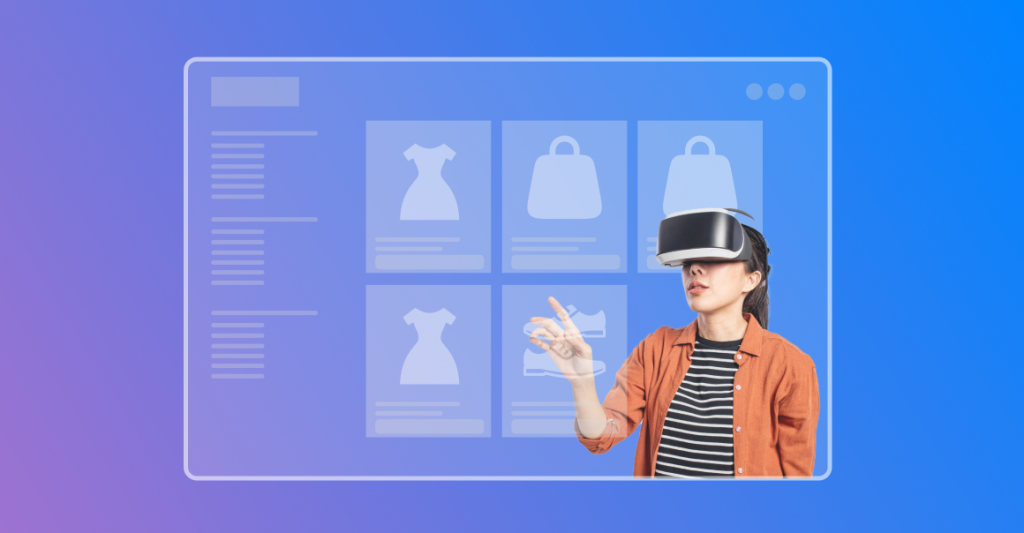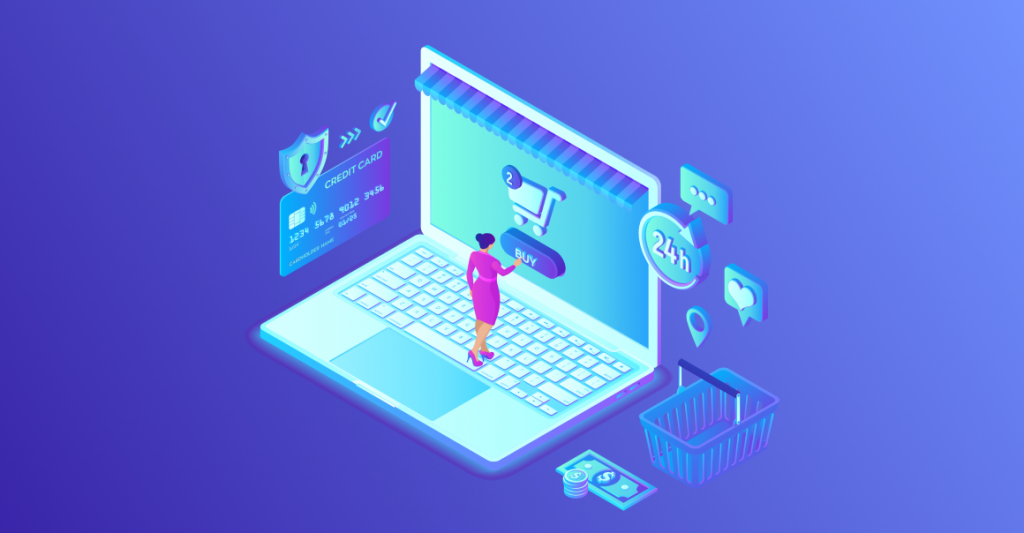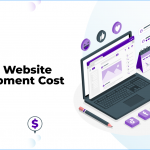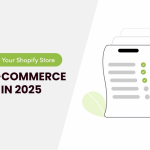It is now 2025, and Shopify is still expanding as a leading platform for developing and growing eCommerce businesses. Which means it is important for you to stay on top of Shopify development trends, no matter if you are a store owner, developer or digital marketer. The e-commerce landscape is changing fast and trends are having a major impact on how businesses interact with customers, optimize their online stores, and provide the best shopping experience. In this article, we will discuss 8 trends in Shopify development Services that everyone should be aware of.
These trends talk about artificial intelligence (AI), mobile shopping, augmented reality, headless commerce, and more. If you are interested in future-proofing your Shopify store, read on. This guide will give you useful information on what to look out for.
8 Shopify Development Trends
1. AI and Machine Learning
Artificial intelligence (AI) and machine learning (ML) are technologies that have changed the eCommerce world. And especially in 2025 these technologies will have even more impact on the development of Shopify stores. It will help Shopify merchants to create a customized experience for customers/users, making them feel valued, and understood, which will ultimately enhance the conversion rates.
- Customized Recommendations: AI analyzes customer data, purchasing history and browsing behavior to recommend the products most likely to be purchased. This will create a very personalized shopping experience, and can help improve average order values (AOV).
- Smart Chatbots: AI enabled chatbots will be much more sophisticated, creating quick support, and enhancing user engagement, all without the help of a human.
- Multilingual Selling: Language barriers have now become easy with the help of AI powered language translation tools. There are apps which will help you translate the content of store into multiple languages. This will help merchants to easily enter into the global market.
- Predictive Analytics: AI will help merchants forecast customer behavior, optimize inventory and even predict demand trends. By utilizing AI and ML, Shopify merchants will be able to automate, and personalize critical interactions with the consumer, improve the shopping experience, and create higher retention rates.
Consider using AI driven apps on your Shopify store, like the smart product recommendations app “Wiser AI” or smart search, or consider utilizing support chatbots with advanced customer support AI.
2. Stronger Checkout Experiences

A smooth and secure checkout experience is one of the most important factors in reducing cart abandonment rates, and increasing conversions. For Shopify and other e-commerce platforms, checkout experience can make or break the game. Customization in Shopify checkout experience was tough, but it has improved, and it continues to better its checkout system, offering merchants more flexibility and customers a more seamless, faster checkout process.
Now merchants and companies can provide a range of payment options like Buy Now Pay Later solution, and use checkout blocks on post-purchase and thank you pages to add customized elements.
You make the blocks static or dynamic depending on your target audience. Add text, buttons, FAQs, and icons. These additional features will definitely boost your customer experience.
3. Shopify Development Trends for Mobile Shoppers

Approximately 79% of Shopify traffic comes from mobile so the need for mobile optimization is essential. Shopify will continue to enhance mobile features to maintain a simple shopping experience across all smartphones and tablets.
- Mobile First Design: Shopify merchants should prioritize mobile friendly themes and designs. Your store’s mobile experience should load faster, the navigation is easy, and there are fewer issues at checkout.
- Progressive Web Apps: They are becoming popular and getting more attraction as they provide better experience to users on all the devices. It also enhances the speed and functionality of mobile apps on web browser.
- Intuitive Shopping Journey: Incorporating voice search into your Shopify store will help customers find products faster, and conveniently. With the rise of smart device uses, and voice assistants, Shopify merchants will now need to optimize their stores for voice searches and mobile.
- Mobile Payment Integration: With mobile wallets like Apple Pay, Amazon Pay and PayPal becoming more popular, Shopify will now support these easy to use payment options on mobile devices.
4. Increasing Opportunities with API-First Development
API-first development is not new to Shopify, but it has started to become more significant in the Shopify ecosystem. API first solutions allow merchants to integrate third party tools, customize their stores, and build unique features with ease. By integrating an API-first approach, Shopify store owners can see new functionalities and build custom solutions that fit their needs.
Many developers are aware of the API strategies, but some of the new beginners have changed their strategies and are starting to utilize the API-first approach in the development.
The API approach helps to improve the sync between different applications so that companies can create an automated workflow to reduce the cost, improve customer experience, and save more time. Shopify provides a range of APIs to better the functionality, like Admin API (secure access to store data), Storefront API (create personalized shopping experience for customers across all the devices), and Cart API (support subscriptions, product bundles, and pricing). Shopify has announced the depreciation of older Cart API by April 2025, asking developers to get a better Cart API.
API-first development brings greater flexibility for developers to integrate apps and create unique features without feeling limited by the platform’s default options. With API first, merchants can scale their Shopify stores more easily by adding new services and functionalities as needed.
5. Augmented and Virtual Reality Shopping Experience

Augmented reality (AR), and virtual reality (VR) are rapidly changing the way consumers shop online. Shopify does support 3D content but as people are moving towards more advanced technology, integrating AR and VR experiences is great for customers to try products before buying them, all from the comfort of their homes.
Studies show that AR and VR experiences boost engagement by approx. 200% in the ecommerce industry.
- Virtual Product Trials: With AR, customers can try on clothes, see how furniture fits in their homes and test products virtually without going anywhere. This reduces uncertainty and increases confidence in purchase decisions.
- Interactive 3D Models: Shopify merchants will be able to showcase their products in 3D, allowing customers to rotate, and view all the products from all angles before making a purchase.
- Immersive Showrooms: With VR customers can visit virtual showrooms, enhancing the overall shopping experience, and allowing businesses to reach a global audience easily. Use Shopify AR features to display products in 3D for customers to interact with on their mobile devices.
6. Headless Commerce

Headless commerce refers to differentiating the front-end, and back-end of your Shopify store which provides flexibility in design and functionality. In 2025 headless commerce is trending as it creates an omnichannel shopping experience. Many Shopify merchants are planning to explore headless commerce to provide a highly customizable and seamless experience to their customers across multiple channels. Headless commerce lets Shopify merchants control the look and feel of their stores across various platforms including websites, mobile apps, and kiosks. Updates can be made to the front-end, and back-end independently, which also accelerates the development process.
Now it is easier to connect with multiple sales channels, such as marketplaces, social media platforms and in-store experiences. Companies can deliver great and consistent results to their customers with the help of headless commerce. Previously companies used to spend a lot of money to create custom builds, but with Shopify headless solutions like Hydrogen demo store, it is going to become more easy.
7. Rise in Omnichannel Shopping
Omnichannel shopping will continue to grow in coming years as people are expecting a smooth experience across both online and offline touchpoints.
Did you know? Shopify is one of the most preferred e-commerce platforms because it allows easy integration with social media channels and marketplace platforms like Amazon, letting merchants reach new and potential buyers/customers.
In 2024 Shopify’s built-in point of sale system received some major updates like improvements to customer meta fields, support for bundles and location based targeting. In 2025 Shopify has improved the omnichannel support capabilities, which will help merchants to connect with customers on social media, in-store, and on mobile devices.
Shopify merchants will be able to create a unified view of their customers across all sales channels, making it easier to personalize marketing and improve customer support.
8. Improved Customer Experience

Delivering outstanding customer experiences is and will always be a primary focus of Shopify development trends. This will include personalization, rapid response time and better shopping experience. When you focus on the customer experience, you can achieve customer satisfaction, loyalty and lifetime value.
- Personalized Shopping Experience: Shopify will continue to refine its personalization features in order to let merchants deliver custom product recommendations, and personalized discounts.
- Customer Service Automation: Chatbots, AI supported customer service and smart recommendations will be used to increase engagement, and allow customers to enjoy faster services.
Follow the Trend with the Help of Experienced Shopify Developers!
The trends for Shopify development in 2025 revolve around improved customer experience, and also providing merchants with the solutions to create more personalized, efficient and measurable ecommerce stores. Each trend including artificial intelligence, machine learning, headless commerce and omnichannel shopping, will lead to the future of ecommerce, and whether you are a Shopify store owner, developer or freelancer, it is important to stay on top of these trends to ensure your store or project continues to grow.Start implementing trends into your development strategy now to prepare for the future of Shopify. Looking for help with your Shopify store development? Our specialists are just a phone call away! We can help you with Shopify development trends so that you can feel confident about your own online store that gets you the results. Expert Village Media—your Shopify development partner. Email us at info@expertvillagemedia.com and we will follow up!











